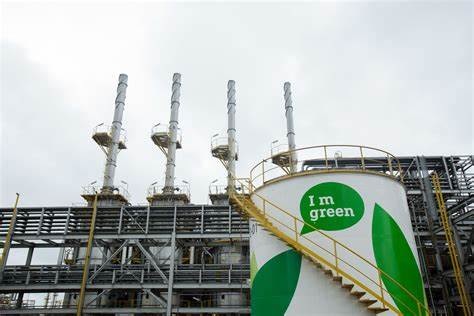Braskem is fully committed to reach carbon neutrality by 2050. Currently, it is investing in several decarbonization projects to reach a 15% reduction in absolute greenhouse gas (GHG) emissions from its direct operations by 2030. Braskem sees three pillars that can contribute to carbon neutrality in the petrochemical sector: (i) CO2 removal and storage in biobased plastics; (ii) carbon capture, storage and utilization (CCS & CCU), and (iii) mitigate GHG emissions within our operational boundaries through energy efficiency and the use of renewable energy.
In the Asia Pacific region, home to 60% of the world’s population, a still-growing middle class is driving consumption of plastics and the subsequent generation of plastic waste to record levels. For example, 90% of all river-borne plastic that ends up in our oceans comes from just 10 rivers around the world – eight of them in Asia.
The growing purchasing power of consumers in Asia Pacific is also translating into greater awareness and motivations for more sustainable and eco-conscious consumption, including opting for recycled or bio-plastic products. That is why Braskem sees great potential for the implementation of the following three pillars of action, which will contribute to carbon neutrality in the region and beyond.

Carbon removal
Braskem was the first petrochemical company to invest in bio-polyethylene and is the largest producer of biopolymers worldwide. These biopolymers, or biobased plastics, are made from a natural source: sugarcane. Five of the top 10 global producers of sugarcane are in Asia Pacific according to the International Sugar Organization. Coupled with the growing demand for more sustainable plastic products from consumers in the region, the opportunity to leverage this resource in support of growing eco-consciousness in the region is tremendous.
By producing these plastics from sugarcane, Braskem does not only reduce its dependency on fossil resources, but CO2 is also removed from the atmosphere and stored within the product.
How does Braskem remove CO2 when producing biobased plastics? Through photosynthesis, sugarcane takes CO2 from the air and a portion of this CO2 is locked into ethanol, the basis of Braskem’s bio-based plastic. At Braskem, ethanol is dehydrated and broken down into ethylene and water. The ethylene is then polymerized into plastic resins within our plants. As this product stores the CO2 from the sugarcane, Braskem’s bio-based plastic has a negative carbon footprint. Based our life cycle assessment (LCA) study, for 1 ton of green PE, 3.09 tonnes of CO2 is being removed from the atmosphere.
Braskem has been producing biobased plastics under the brand name I’m greenTM since 2010. Braskem is currently expanding its production capacity of green ethylene from 200 to 260 ktons per year through an investment of US$ 87 million. Between 2010 and 2020, I’m Green avoided the emission of at least 5.54 million tonnes of CO2 – equivalent to more than one year of automotive emissions in the city of São Paulo. Our goal is to grow our capacity of bio-products to one million tonnes by 2030 – multiplying our current capacity by at least five.
Carbon capture storage (CCS) and carbon capture utilization (CCU)
Braskem is also investing in carbon capture technologies. With these, CO2 can be stored, or utilized by converting the CO2 into raw materials which can be used to produce chemical products. The company is currently involved in a disruptive project, in which it studies a technological route for chemical conversion of CO2 into oxygenate compounds, solely driven by the energy of light (photocatalysis). The first reaction to be studied is the conversion of CO2 and methane into acetic acid. This kind of process has the theoretical potential to capture 8 tonnes CO2e per ton of new product.
Emissions reduction through energy efficiency and renewable energy
In addition, Braskem’s path to reduce CO2 emissions includes energy efficiency and increasing the use of renewable energy. In the last year, Braskem’s efforts under the industrial decarbonization program resulted in the development of MACC, Marginal Abatement Cost Curve, and a decarbonization roadmap. As result of that, Braskem mapped 69 initiatives to reduce our emissions throughout the production process. Of those, 33 are already being implemented.
On the renewable energy side, 71% of Braskem´s electricity consumption is from renewable sources. Since 2018, we have signed five renewable energy purchase contracts, with partners such as Veolia, EDF and Auren. Within these contracts’ terms, about 2.2 million tonnes of GHG emissions are expected to be avoided.
Next to that, naphtha crackers are one of the main sources of carbon dioxide (CO2) emissions in the petrochemical sector. To this end, Braskem is investing in the electrification of parts of the process. As an example, Braskem recently entered into an agreement with Siemens to modernize a cogeneration power and steam plant at its Petrochemical Complex in Sao Paulo, Brazil. We are expecting this will result in a reduction of ~100 kt GHG emissions per year, and it will reduce 7.3% of energy consumption at the site and 11% of water consumption. In addition, Braskem launched Vogen, a subsidiary of Braskem, which will focus on delivering renewable energy and energy transition solutions.
Transitioning to carbon neutrality, together
Carbon removal, carbon capture storage and utilization and emissions reduction are only three of the many examples how the petrochemical industry is developing innovations to reduce carbon emissions. Braskem believes it is imperative that all players in the sector continue to invest in new technologies and innovations, and share knowledge and experiences with each other. That is the only way that will enable the industry to make the transition to carbon neutrality. Braskem is honored to be part of COP27 and are looking forward to combat climate change, together.














